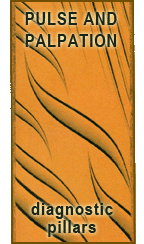The Racing, Hurried, Urgent, Swift Pulse (Ji Mai)

Racing Pulse (?? Ji Mai, hurried, urgent, swift)
key point: extremely rapid (over 140 bpm)
Indications: (Forceful) Excess heat: heat excites movement of blood leading to the rapid pulse.
(Forceless) Yin exhaustion and/or qi collapse (again, heat leads to the rapid pulse).
Explanation: “racing” is simply a faster pulse than the fast pulse. The same mechanisms are at play, only more so. Excess heat excites the movement of blood since heat is yang and yang http://quotecorner.com/topamax.html pushes the blood. A severe lack of yin fluids can also give rise to the racing pulse, however its speed suggests that the yin is approaching exhaustion or the qi is ready to collapse. These are end-stage terms (such as “collapse” and “exhaustion” rather than “deficiency”, “vacuity”, “insufficiency”, etc.) and end-stage signs.

The Racing Pulse
Next: the oxymoronic pulse, it’s the consistently irregular pulse.
 Last modified: August 5, 2009
Last modified: August 5, 2009  Tags: Diagnosis, Palpation · Posted in: Pulse Class, Pulse-Palpation
Tags: Diagnosis, Palpation · Posted in: Pulse Class, Pulse-Palpation
